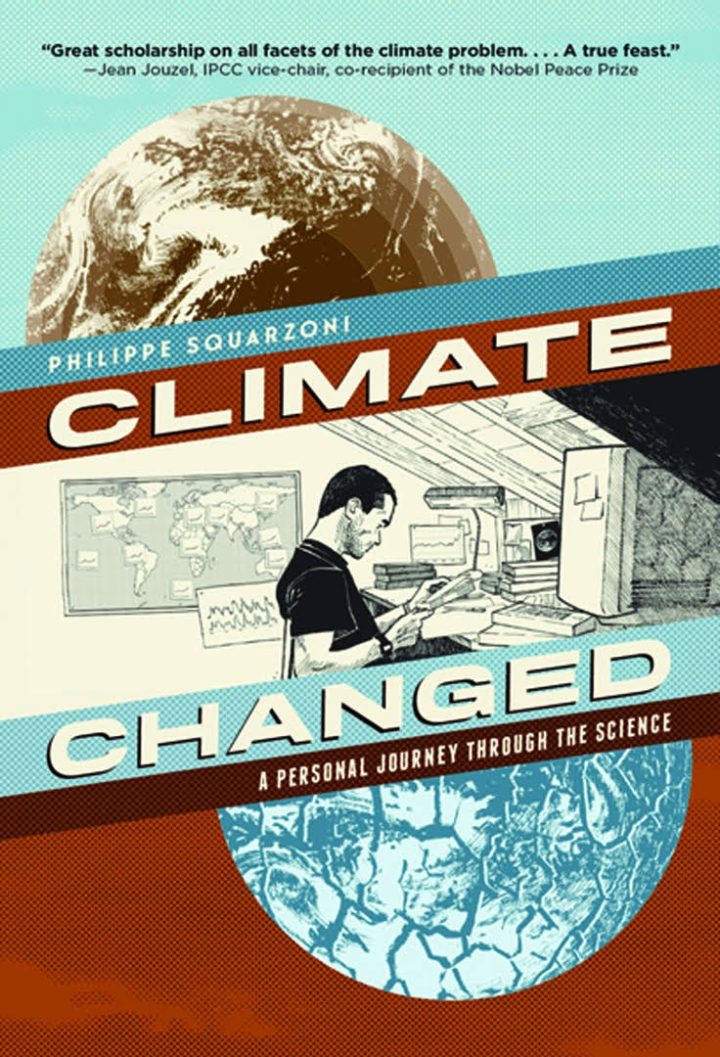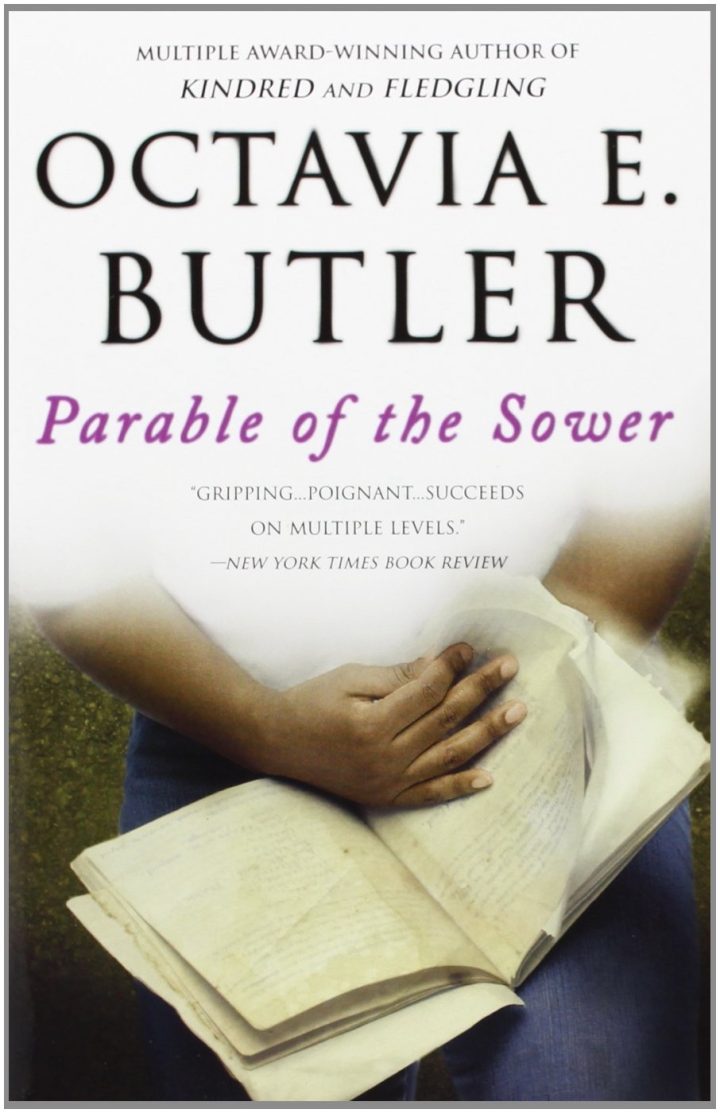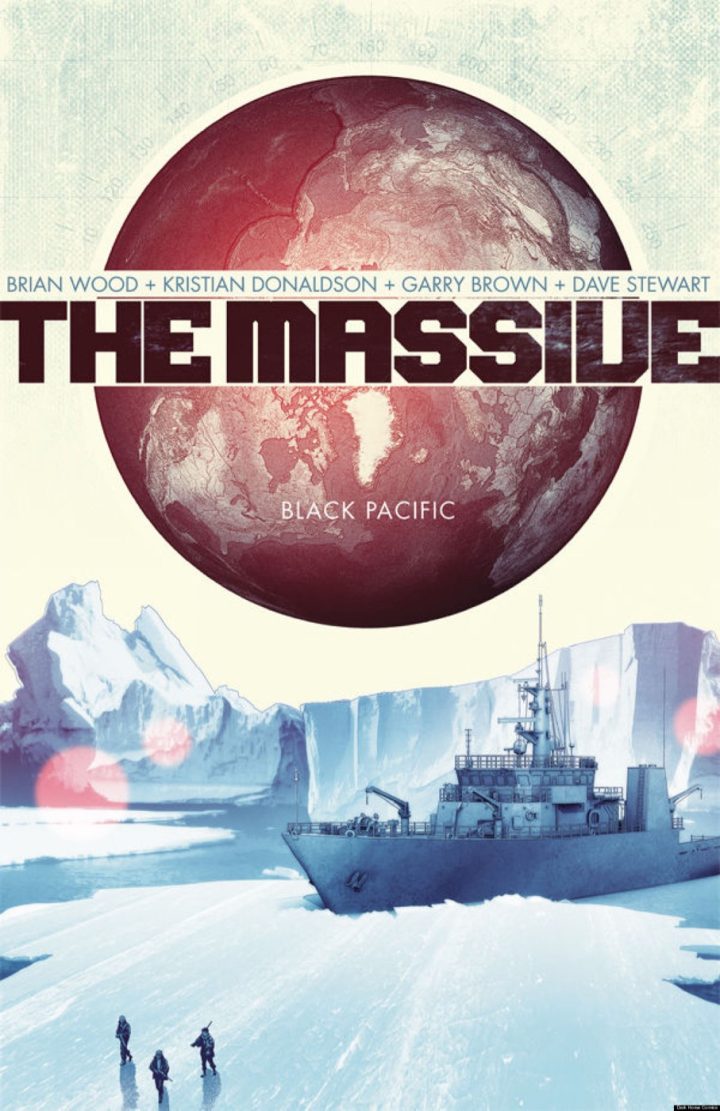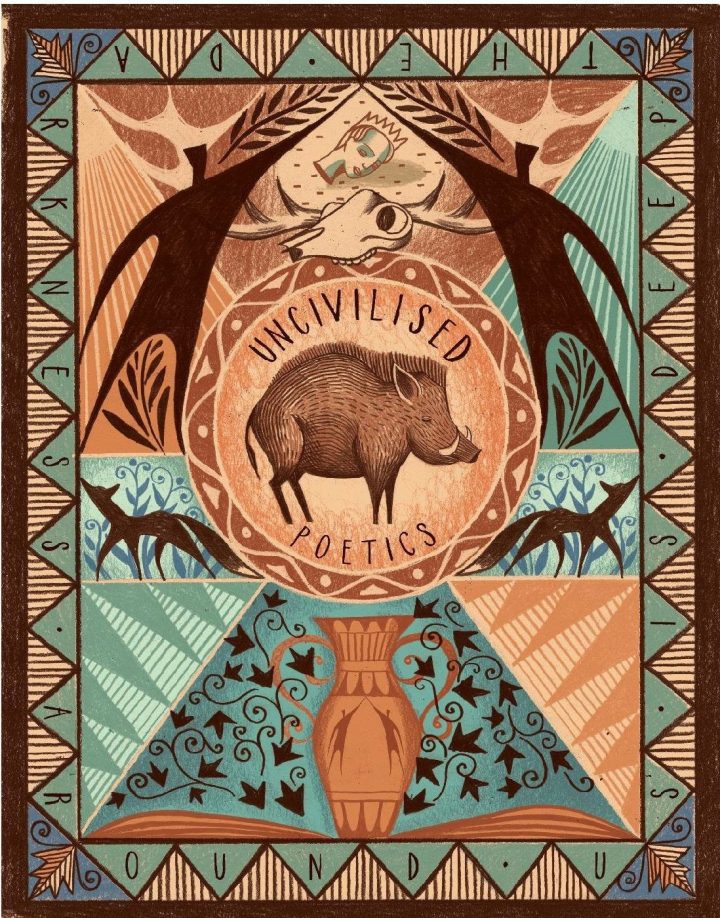What Can We Learn from Dystopian Fiction About Climate Change?
If you haven’t heard of cli-fi yet, you are not alone; however, you have probably either read or watched some already.
June 30, 2017
Support Hyperallergic’s independent arts journalism.
Support Hyperallergic’s independent arts journalism.

Philippe Squarzoni, Climate Changed: A Personal Journey through the Science, copyright Harry N. Abrams (cover image courtesy of Abrams ComicArts)
Recently, a friend asked on social media, “What do you people read to wind down?” He was referring to the distress we all suffer from the endless negative news coming from the Trump administration. I first suggested sci-fi, but upon remembering that he is a lobbyist for international corporations’ divestiture from the fossil fuel industry, I decided to do some research on sci-fi novels which focus on climate change. That’s when I discovered the so called cli-fi (climate change fiction) genre.
If you haven’t heard of it yet, you are not alone; most of the people I mentioned it to were unaware of it too. However, you have probably either read or watched some cli-fi already. IMBd’s cli-fi page has more than a dozen titles. The Goodreads list of cli-fi novels is over 130 titles long. During the recent months, Lidia Yuknavitch’s The Book of Joan, Zachary Mason’s Void Star, Jane Harper’s The Dry, Margaret Drabble’s The Dark Flood Rises, Kim Stanley Robinson’s New York 2140, Cory Doctorow’s Walkaway, and Sally Abbot’s Closing Down have all hit the shelves described as cli-fi. And, since February of this year, the Chicago Review of Books has published a monthly column on its web site exclusively dedicated to the genre.

Steven Amsterdam,The Things We Didn’t See Coming, copyright Anchor (image courtesy Steven Amsterdam)
Still, there is strong skepticism about the genre’s originality. When I mentioned it to my sci-fi and graphic novel enthusiast friends, they mostly rolled their eyes. Nothing was new about stories focusing on a man-made ecological disasters; they just showed up in other literary categories. For example, Alan Moore’s graphic novel The Swamp Thing, a story based on the consequences of mismanaged nuclear waste was published in 1971. This was also the year in which Dr. Seuss wrote his infamous Lorax, a children’s classic about deforestation and environmental irresponsibility. Even older is Alexander Bogdanov’s communist sci-fi novel, The Red Star – now almost 110 years old – which refers to an ecological crisis very much like ours. Older yet are the ancient religious and mythological Mesopotamian, Hindu, Chinese, and Abrahamic narratives, all of which refer to eco-disasters caused by human mischief.

Octavia Butler,, copyright Grand Central Publishing (photo courtesy of Hachette Book Group)
Yet, it is also true that there has been a growing emphasis on ecology during the last two decades in almost every field. In history, there is the so called spatial turn, which refers to a growing interest in geography and ecology. In philosophy, Glenn Albrecht has coined the term solastalgia to describe “a form of psychological or existential distress caused by environmental change, such as mining or climate change.” In the field of geology, there is widespread acknowledgment of the anthropocene, re-popularized in reference to a new epoch defined by the “significant human impact on the Earth’s geology and ecosystem” according to Wikipedia. So, cli-fi can be understood as modern literature’s response to our anxieties about the current consequences of climate change.
In her book, Antonia Mehnert defines cli-fi as:
literature dealing explicitly with anthropogenic climate change,” which “gives insight into the ethical and social ramifications of this unparalleled environmental crisis, reflects on current political conditions that impede action on climate change, explores how risk materializes and effect society, and finally plays an active part in shaping our conception of climate change.
In Wikipedia, cli-fi means the “literature that deals with climate change and global warming. Not necessarily speculative in nature, works of cli-fi may take place in the world as we know it or in the near future.” Hence, cli-fi is not any eco-conscious or eco-apocalyptic literature. It focuses specifically on the current climate change, which we are experiencing. (One place to build your familiarity with cli-fi is to read a recent interview with Dan Bloom, the man who originally coined the term.)

Area X, The Southern Reach Trilogy by Jeff VanderMeer, copyright FSG (image courtesy of Jeff VanderMeer)
Most commonly cited examples of the genre are Cormac McCarthy’s The Road, Kim Stanley Robinson’s the Science in The Capital trilogy, Margaret Atwood’s The Maddaddam trilogy, Nathaniel Rich’s Odds Against Tomorrow, and Barbara Kingsolver’s Flight Behavior. However, Octavia E. Butler’s The Parable of the Sower tops my list, since it predates (in 1993) those novels mentioned above, and it seems to have inspired Atwood’s The Maddaddam trilogy and Cormac McCarthy’s The Road, which are considered pillars of the genre. It also reads like a masterpiece, along the lines of Jean Rhys’s Wide Saragossa Sea. The Parable of the Sower is the coming-of-age story of a an African-American minister’s daughter who lives in a racially mixed and charged community, which gated itself due to an ongoing ecological crisis. A less acknowledged, but excellent novel is Steven Amsterdam’s Things We Didn’t See Coming, which is experimental and enchanting till the very last page. There are large gaps in the story-line, that make it read like Andre Breton’s surreal novel Nadya, but these gaps also mimic how we deal with moments of disaster and stress by taking refuge in collective amnesia. By far the best cli-fi out there must be Jeff VanderMeer’s The Southern Reach trilogy. This is indeed a story about our changing climate: how a territory called Southern Reach becomes a self conscious ecology, starts to remember, thinking, and communicate with human beings. VanderMeer also shifts between genres; the first volume is a horror story that gave me serious nightmares three nights in a row. The second volume is a detective story, and the third one is a mystery.
As for graphic novels, Philippe Squarzoni’s award winning Climate Changed, a graphic documentary about his personal struggle to understand climate change is a remarkable artistic feat. Brian Wood’s, The Massive, series relates the story of an eco-activist gang who roam the international seas in the near future, trying to save the planet from further harm. The fifth volume of Paul Chadwick’s Concrete: Think Like a Mountain is also a personal favorite of mine, and the last issue of World War 3 from AK Press is entirely dedicated to climate change chaos.

The Massive, written by Brian Wood and Illustrated by Kristian Donaldson and Garry Brown, copyright Dark Horse Comics (courtesy of Dark Horse Comics)
Last but not the least, I have to mention The Dark Mountain Project, which is active since 2009. It is best known for its Dark Mountain Manifesto, which opens with the statement: “Those who witness extreme social collapse at first hand seldom describe any deep revelation about the truths of human existence. What they do mention, if asked, is their surprise at how easy it is to die.” They have so far published 10 volumes of collected short fiction, poetry, critical essays, graphic fiction, and visual art, all of which explore climate change, and how we write or tell stories about it. Its past editorial boards have included authors like the famous feminist sci-fi writer Ursula La Guin and late cultural critic John Berger. Each volume delivers a serious punch and could generate more debate about cli-fi.

Uncivilised Poetics, Dark Mountain #10, October 2016, copyright The Dark Mountain Project (courtesy of The Dark Mountain Project)
We all know the news about the future of our planet is not good. At the current rate, we have only 60 more harvests left. Marine life is in dramatic decline, and Antarctica has joined the North Pole in melting, which has far more disastrous implications. Weather temperatures are regularly record breaking, sea and river levels are rising, the salinity of our oceans is quickly changing, and the behavior of our atmosphere is evermore unpredictable. Climate refugees are no longer a thing of fiction; parts of Africa and the Middle East will become uninhabitable in the near future, and the World Bank has already advised a number of countries to revise their immigration policies, because they will be hit by a tsunami of migrants. Meanwhile, in the US, we are governed by those who prefer to erase the climate-change data, withdraw from the Paris climate accords, sell our natural reserves to the developers, and eliminate the Environmental Protection Agency. Pathetic as it may sound, cli-fi offers a type of relief from this bigotry. It imagines that one day such idiocies will be washed off clean, and the earth will continue its adventure — probably without us. And even if anyone is left to survive, they would most likely strike a far better covenant with this planet than the one we have at present.
Related
Two Books Take on the Vast Ecological and Social Consequences of Climate Change
May 21, 2019
An Anime Fantasy Combines Myth With Climate Change
January 16, 2020
Many Stories Are Told Through the Typography in Science Fiction Films
December 26, 2018

Murat Cem Mengüç is a freelance writer, artist and a historian who holds a PhD in history of MENA. He is the founder of Studio Teleocene, and currently based outside of Washington, DC. More by Murat Cem Mengüç
No comments:
Post a Comment